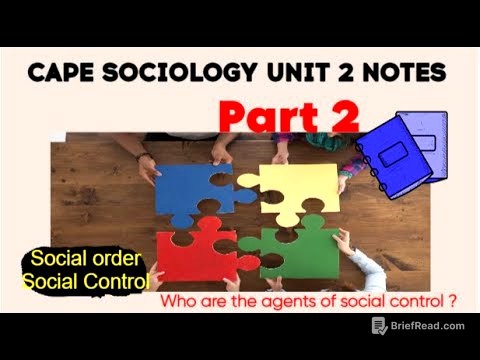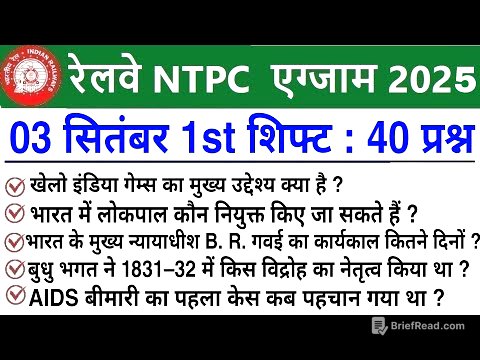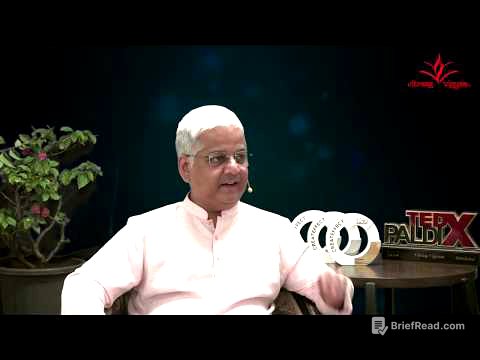TLDR;
This episode of The Why Files explores the conspiracy theory that John Wilkes Booth, the assassin of Abraham Lincoln, did not die at Garrett's farm but escaped and lived for many years under different identities. The video examines the evidence supporting this theory, including inconsistencies in the official account of Booth's death, the existence of a will written by a man claiming to be Booth under an alias, and the story of a man named John St. Helen who confessed to being Booth. It also presents counterarguments and debunks many of the claims made by proponents of the escape theory, ultimately concluding that while the story is intriguing, the evidence suggests Booth likely died at Garrett's farm.
- The video explores the theory that Edwin Stanton, Lincoln's Secretary of War, was involved in a plot to either kidnap or assassinate Lincoln.
- It examines the evidence for and against the official account of Booth's death, including the identification of the body and the testimony of witnesses.
- The video discusses the various identities Booth allegedly assumed after his escape, including John St. Helen and David E. George.
- It debunks many of the claims made by proponents of the escape theory, such as the existence of Booth's descendants and the authenticity of handwriting samples.
Intro [0:00]
The episode introduces the idea that the accepted narrative of John Wilkes Booth's death might be false. It suggests that Booth's assassination of Lincoln was part of a larger plot involving secret allies and cover-ups, and that Booth may have escaped justice with the help of individuals within Lincoln's own cabinet. The episode promises to explore the evidence that supports this theory and uncover the truth behind the events surrounding Lincoln's assassination.
Delete Me Advertisement [0:02]
The segment is an advertisement for Delete Me, a service that removes personal information from data broker and people search sites. It highlights the risks of having personal data exposed online, such as scams, harassment, and doxing. The advertisement explains how Delete Me works, including its hands-free service, privacy reports, and custom request handling. It also mentions that Wire Cutter named Delete Me the number one data removal service. A discount code is provided for viewers who sign up for Delete Me.
The Civil War and John Wilkes Booth [3:39]
In 1865, during the Civil War, John Wilkes Booth, a famous actor and Confederate sympathizer, opposed Lincoln's plans to grant rights to former slaves and punish Confederate leaders. Booth initially planned to kidnap Lincoln to leverage the release of Confederate prisoners but shifted to assassination after the Confederacy's surrender. He had connections within Lincoln's cabinet who also wanted Lincoln dead and helped him escape.
Lincoln's Enemies [6:14]
President Lincoln faced opposition from Democrats who wanted to restore the status quo and radical Republicans who sought harsh punishment for the South and rights for freed slaves. Secretary of War Edwin Stanton, a powerful figure, disagreed with Lincoln's lenient approach to the South and saw Vice President Andrew Johnson as someone he could control. Stanton allegedly contacted Booth, providing resources for a kidnapping plot, which later evolved into an assassination plan that Stanton allowed to proceed by removing security measures.
The Assassination [9:36]
On April 14, 1865, John Wilkes Booth assassinated President Abraham Lincoln at Ford's Theater. Booth, familiar with the theater, gained access to the presidential box due to a series of security lapses orchestrated by Edwin Stanton. After shooting Lincoln, Booth jumped to the stage, broke his leg, and escaped. Stanton then controlled the investigation, ensuring Booth's escape route remained open.
The Manhunt [14:04]
Following Lincoln's assassination, Edwin Stanton initiated a massive manhunt for John Wilkes Booth, offering a substantial reward for his capture. Booth, along with conspirator David Herold, evaded authorities with the help of Confederate sympathizers, eventually reaching Garrett's farm in Virginia. There, soldiers surrounded the barn where Booth was hiding, and after a standoff, a soldier shot and killed a man believed to be Booth.
Booth's Secret Life [16:30]
Despite his public bachelor image, John Wilkes Booth secretly married actress Isola Martha Mills in 1859, and they had a daughter named Ogarita. After Booth's reported death, Isola was courted by John Stevenson, but she revealed she was still married and planned to meet Booth in San Francisco. Booth, using the alias John Byron Wilks, obtained a British passport and sailed to India with Isola. Later, Isola returned to the United States and married Stevenson, having a son named Harry Jerome Stevenson. Booth, in Bombay, wrote a will under the name John Byron Wilks, detailing his assets to his wife, children, and other beneficiaries. Ulysses S. Grant ordered an investigation into the will, puzzled by how Wilks knew so much about Booth's personal life.
John St. Helen [19:07]
In 1872, a man named John St. Helen appeared in Texas, displaying knowledge of Shakespeare and a familiarity with firearms. He befriended a lawyer named Finis Bates, and during a bout of pneumonia, St. Helen confessed to Bates that he was actually John Wilkes Booth, detailing the assassination and his escape. St. Helen disappeared shortly after recovering, leaving Bates to wonder about the truth of his confession.
David E. George [21:42]
In 1903, a painter named David E. George committed suicide in Oklahoma. A note found among his belongings instructed authorities to contact Finis Bates. Bates identified the body as John St. Helen, who had confessed to being John Wilkes Booth. George had been living a quiet life, but neighbors reported strange behavior, including reciting Shakespeare. Before his death, George confessed to a minister that he was John Wilkes Booth. The body was embalmed and displayed as the mummy of John Wilkes Booth, attracting crowds and sparking further speculation.
The Body Switch [24:27]
The theory suggests that the man killed at Garrett's farm was not John Wilkes Booth but someone else. The autopsy was conducted hastily and under suspicious circumstances. Dr. John Frederick May, who had previously removed a growth from Booth's neck, hesitated to identify the body. David Herold claimed the man in the barn was James William Boyd, an ex-Confederate soldier. It's proposed that Stanton and Booth made a deal for Booth to escape, with Boyd taking his place.
Debunking the Conspiracy [28:52]
The video addresses and debunks several key claims supporting the theory that Booth escaped. Dr. John Frederick May ultimately identified Booth's body based on a surgical scar. While Booth's diary was tampered with, it was likely a day planner rather than a journal containing incriminating evidence. James William Boyd's release from prison was due to compassionate reasons, not a double agent plot. Finis Bates, who popularized the story of John St. Helen, profited from it through books and exhibitions. Handwriting samples from St. Helen did not match Booth's confirmed writing. DNA tests on descendants of Booth's alleged children were negative. The romantic subplot and Booth's will were based on fiction. Edwin Stanton is defended against accusations of being a villain, as he supported civil rights for freed slaves. The detailed record of Booth's movements as a fugitive makes it difficult to fake his death.
Conclusion [32:50]
The video concludes that John Wilkes Booth likely died at Garrett's farm, despite the intriguing escape theories. It emphasizes the importance of considering the consequences of Lincoln's assassination and the impact of Andrew Johnson's presidency on the Jim Crow era. The video condemns Booth's actions and suggests that his fate, whether death in a barn or humiliation as a sideshow exhibit, is a fitting end for a despicable villain.
Outro [34:26]
The host thanks the viewers for watching and encourages them to like, subscribe, comment, and share the video. He mentions that the topic was recommended by viewers and promotes other content, including the podcast, Discord server, 24/7 stream, and production calendar. He also thanks the patrons for their support and promotes the Wi-Fi store and YouTube membership.
Music Video [38:24]
The video ends with a musical segment.









![SPECIAL EPISODE! - Things Are Going Bad on the Internet [Digimon: The Movie]](https://wm-img.halpindev.com/p-briefread_c-10_b-10/urlb/aHR0cDovL2ltZy55b3V0dWJlLmNvbS92aS9rUEExeEUzNVI2QS9ocWRlZmF1bHQuanBn.jpg)